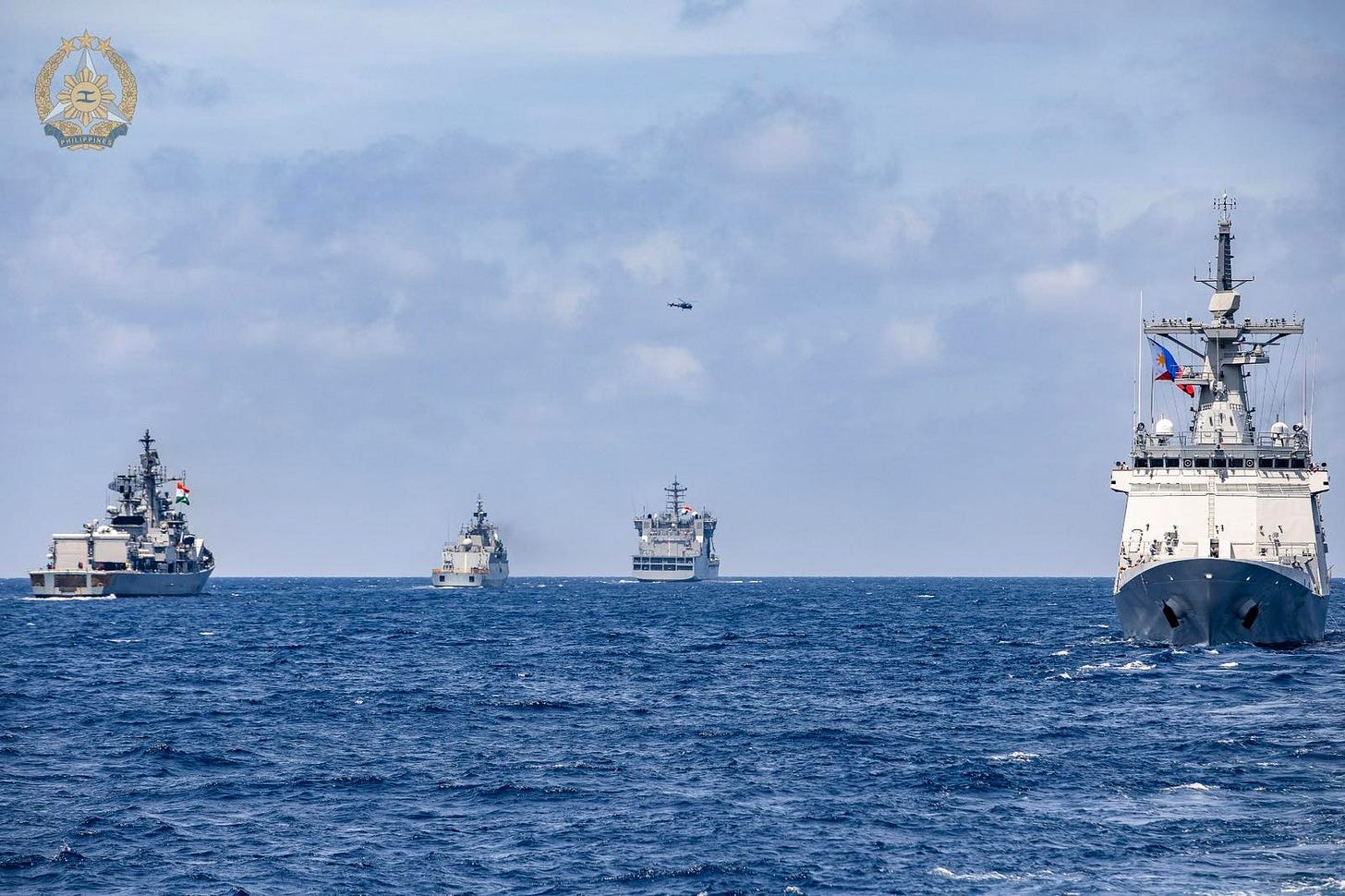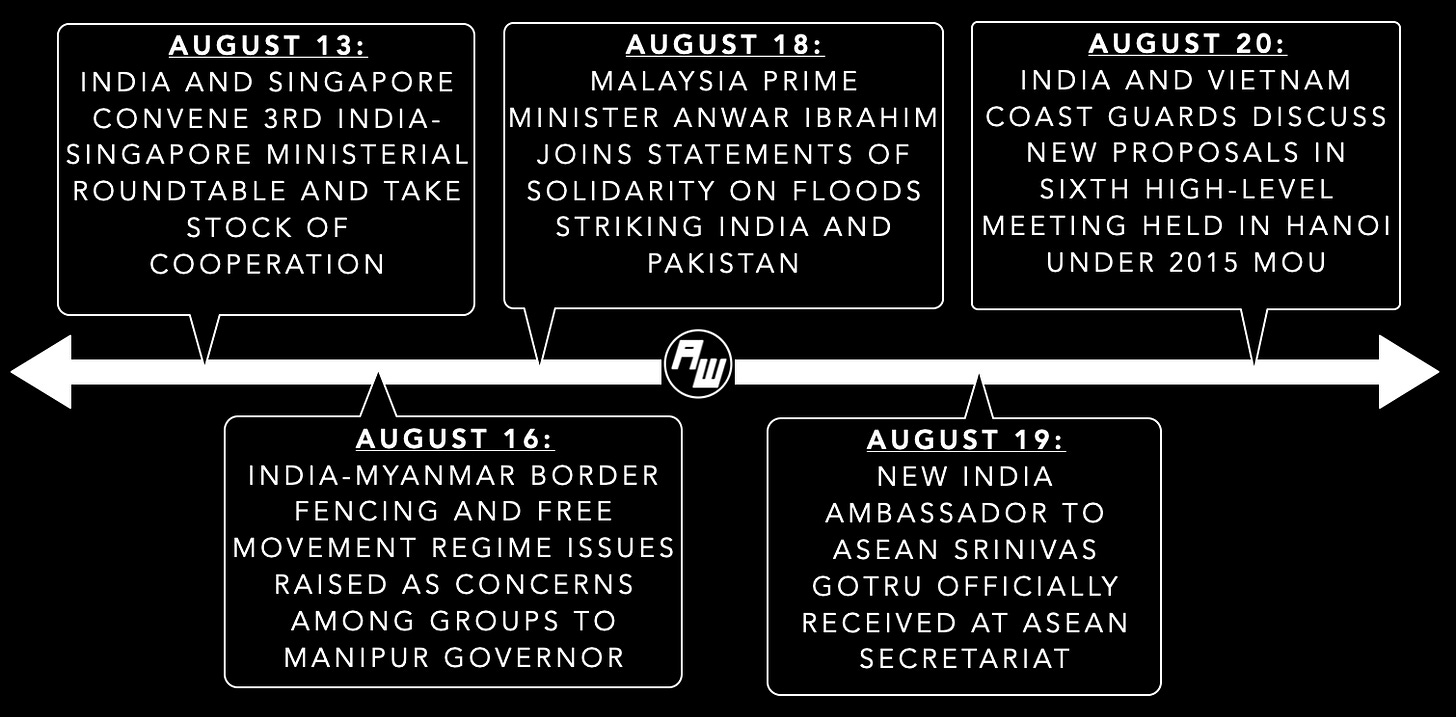Review: Global South, Quad and Beyond in ASEAN India Futures
Ex-ambassador details future geopolitical and geoeconomic roadmap for India's engagement with Southeast Asia and candidly assesses challenges that lie ahead.
A new book by an ex-ambassador details future geopolitical and geoeconomic roadmap for India's engagement with Southeast Asia and candidly assesses challenges that lie ahead for both sides in the rest of the 21st century.
WonkCount: 1,458 words (~6 minutes)
Review: Global South, Quad and Beyond in ASEAN India Futures
Context
“There is an impression in diplomatic circles that strategic partnerships have become common currency. Not for the Philippines,” Philippine President Ferdinand Marcos Jr. told an audience earlier this month in New Delhi where he had officially elevated India-Philippine ties to the level of a strategic partnership, which is only Manila’s fifth such relationship to date1. The elevation, which came as the two sides also completed their first-ever maritime drills in the South China Sea, was an important datapoint in India’s engagement in Southeast Asia, with Manila looking ahead to its upcoming ASEAN chairmanship year in 20262. Engagement is also taking place within a broader context where both New Delhi and Southeast Asian states play important roles in evolving strategic conceptions with respect to the Global South and the Indo-Pacific, even if occasional developments like past intra-ASEAN differences over Quad perceptions or India’s withdrawal from the Regional Comprehensive Economic Partnership (RCEP) also expose periodic differences.
Select Recent Developments Involving India and Partners in Southeast Asia and ASEAN
A new book by India’s former ambassador to ASEAN Gurjit Singh titled The Mango Flavour: India and ASEAN After a Decade of the Act East Policy details the future strategic roadmap for India's engagement with Southeast Asia as a region and ASEAN as an institution3. In doing so, it offers a rare deep dive into India’s ties with Southeast Asia also addressed in broader books on India’s foreign policy worldview and great power quest recently reviewed on ASEAN Wonk. The book both details candid practitioner insights on future trends as well as current realities, including interagency divisions within the Indian government that led to “no whole-of-government approach” to RCEP membership and challenges in getting traction for fora like the Delhi Dialogue as well as new educational programs targeting Southeast Asian students4. “At present, the world needs more South-South collaboration, and India and ASEAN are well-placed to provide this,” the book notes alongside an outline of a future-looking agenda for policymakers on both sides5.
Analysis
The book also forecasts future trends to watch in the coming years and their wider regional and global implications (see originally-generated ASEAN Wonk table below for a summary of these critical areas, along with major policy manifestations and datapoints. Paying subscribers can also read the rest of the “Analysis” section and “Implications” section looking at how these dynamics play out in the future).





